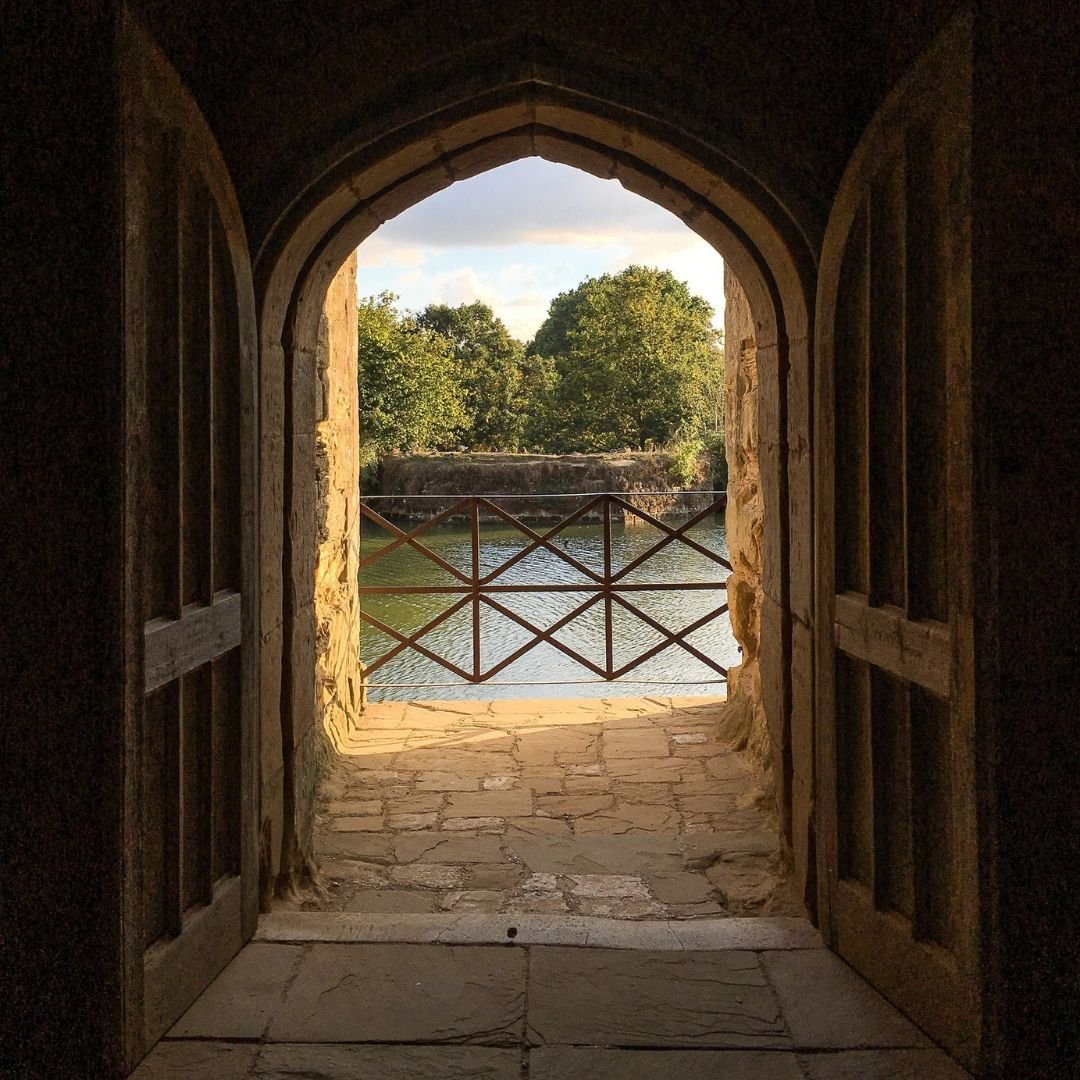Bodiam Castle: One Of Britain's Most Picturesque Ancient Monuments
Bodiam Castle is a stunning medieval fortress located in East Sussex.
Set in the heart of an historic landscape, with spiral staircases, battlements and a portcullis, 14th century Bodiam Castle is one of Britain's most picturesque and romantic ancient monuments.
Windows where arrows were once loosed, a tower that was once a look-out and ruins that were once walked upon by knights; this is a place where you can relive your childhood memories and let your imagination run riot.
A wide moat encircles the seemingly untouched Medieval exterior.
Because of the moat, access to the castle is now by a long bridge that crosses to an original octagonal stone platform or plinth, all that remains of a defensive structure.
Originally, the bridge was angled across the moat, leaving any attackers exposed and vulnerable to missiles as they attempted to gain access the castle.
In the impressive gatehouse is the castle's original wooden portcullis, an extremely rare example of its kind.
In the courtyard, enough of the interior ruins survive to give an impression of castle life.
Interesting features include the keyhole gunports, showing that hand-held cannons were used in the castle’s defence.
There are four round towers, one at each corner, with rectangular towers flanking the gateway and in the middle of each side.
Its design, shape and construction make Bodiam Castle a text-book example of a strongly-defended medieval castle, with sufficient internal structure remaining to indicate it was a state-of-the-art construction in terms of both defence and accommodation.
Today, the historic site is owned by the National Trust and open to the public.
It was originally built in 1385 by Sir Edward Dalyngrigge, a former knight of Edward III, ostensibly to defend the area against French invasion during the Hundred Year’s War.
Of quadrangular plan, Bodiam Castle has no keep, having its various chambers built around the outer defensive walls and inner courts.
Today, much of the castle interior is lost. Nobody can be certain when Bodiam Castle stopped being a home, and there is no evidence of a siege.
The castle may have slowly fallen into disrepair during the 15th-17th centuries, when owned by a series of absent landlords.
The 18th century saw a growing interest in ancient monuments and Britain’s ruins became popular places to visit.
Many examples of graffiti from these early tourists can be found at Bodiam.
While Bodiam Castle's exterior remains largely intact, its interior is in ruins.
The residential structures within the castle were situated along the curtain walls, although there are enough remnants to reconstruct a layout of the castle.
The castle was organised into distinct living areas for the lord and his family, esteemed guests, garrison members, and servants.
The southern section of the castle comprised the main hall, kitchens, and associated chambers.
The great hall, situated to the east of the centrally positioned postern gate, measured 24 by 40 feet and likely matched the height of the curtain wall.
Adjacent to the great hall on its west side were the pantry and buttery, connected by a passageway.
Three arches provided entry to different areas: the pantry, buttery, and the kitchen, which occupied the westernmost part of the southern range.
This layout was typical of large medieval residences. The great hall served as the focal point for social gatherings and guest entertainment.
The lower level housed the buttery and pantry, while an upper room served an uncertain purpose. The buttery included a cellar for storing ale and wine, while the pantry stocked supplies for the kitchen.
To mitigate the heat generated by cooking fires, the kitchen matched the height of the curtain walls, providing ample space for heat absorption.
Additionally, a well was situated in the southwest tower, providing water for the castle's occupants.
On the eastern side of the castle, there is a chapel, a hall, and an antechamber.
To accommodate the chapel, the curtain wall near the northeast corner extends 9 feet further into the moat compared to the rest of the east wall.
Immediately south of the chapel lay the principal living quarters for the lord and his family.
These two-story buildings, including a basement, have an indistinct layout of rooms.
Aligned along the western curtain wall were an additional hall and a kitchen. While their exact function remains uncertain, it is likely that they were designated for the household's retainers.
This "retainers' hall" lacked windows on its west side, creating a relatively dim atmosphere compared to the grand hall. Unlike the grand hall, the "retainers' hall" lacked a large fireplace.
Positioned adjacent to the kitchen, there was no screen passage separating the two spaces.
Above the "retainers' hall", which occupied the ground floor, was a room lacking a fireplace and with an unclear purpose.
Landscape
The area surrounding Bodiam Castle was landscaped when the castle was built, to increase its aesthetic appeal.
Archaeologists Oliver Creighton and Robert Higham have described Bodiam as one of the best examples of landscaping to emphasise a castle.
The water features were originally extensive, but only the moat survives, along with the earthworks left over from its construction.
Roughly rectangular, the moat is supplied by several springs, some of them within it, which made it difficult to drain during the excavations of the 1930s.
A moat can prevent attackers from gaining access to the base of a castle's walls, but in the case of Bodiam it also had the effect of making the castle appear larger and more impressive by isolating it in its landscape.
The moat is now regarded more as an ornamental feature than a defence.
The approach to the castle through the moat and satellite ponds was indirect, giving visitors time to view the castle in its intended splendour.
Someone who recently visited the castle said: “Lovely walks, amazing views from the towers but beware small winding stone steps up but worth it.
”Lovely history both in and around the castle, lovely shop staff and cafe served well needed coffee and cakes after walking up and around the castle.”
According to the National Trust website, the castle is open to visitors from April 1.
Tickets can be booked in advance via their website - adults entry starts at £11.
If you’d like to visit, the address is: Bodiam, Robertsbridge TN32 5UA.
If you enjoyed this blog post, please follow Exploring GB on Facebook for daily travel content and inspiration.
Don’t forget to check out our latest blog posts below!
Thank you for visiting Exploring GB.























